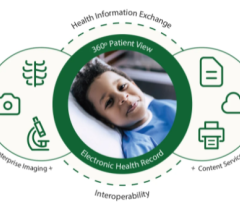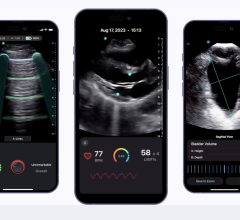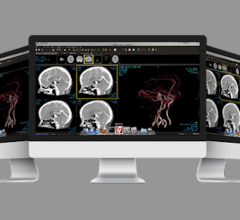Imaging technology has advanced by leaps and bounds in the last few years with enhancements in multimodality imaging, image-guided radiotherapy and with new applications for CT and MR in cardiology. Medical imaging, as a result, is gaining widespread acceptance as a diagnostic and therapeutic tool across multiple specialties, including radiology, oncology, cardiology, pathology, nuclear medicine and more.
With the rise in medical imaging comes the challenge of managing large volumes of imaging and clinical data. To meet the task, healthcare facilities are implementing integrated content management systems for enterprise-wide electronic health records (EHR). With all of these solutions in place, one question remains unanswered — how can healthcare facilities afford to pay for this new digital infrastructure? What is becoming apparent is that no healthcare facility can afford to go without a digital system, and they must look to the cost savings generated from long-term efficiency gains. The return on investment (ROI) is gained through improvements in managing imaging data, better utilizing clinical information and streamlining enterprise-wide workflow.
How Imaging Cuts Costs
The volumes of medical image data are expanding, and its anticipated growth can be illustrated by the rising numbers of medical imaging procedures and medical modality sales in the near future. Based on reports by Frost and Sullivan, by 2010, annual PET procedure volumes should rise to 3.2 million procedures and U.S. sales units will increase to 555 units to produce sales of $916 million. U.S. FDG-PET sales for oncology, cardiology and neurology will reach $522 million by 2010. Brachytherapy product sales are also forecast to grow to nearly $1.4 million by 2008, up four times from 2002.
The question on every hospital CFO’s mind is what are the savings generated from more efficient imaging management.
In a study by Boston’s Massachusetts General Hospital, researchers determined that increased use of state-of-the-art CT imaging in treating facial trauma patients led to a reduction in overall imaging costs of 22 percent per patient between 1992 and 2002. According to the study, the “results show a significant overall cost savings because CT has become less expensive than radiography, and the use of CT has increased relative to radiography.”
Imaging can also cut costs by reducing the individual treatments or episodes of care. Add to that the benefits of minimally-invasive image-guided procedures, such as image-guided needle core biopsy, which may cost up to three times less than a surgical incision in the breast. (“Core-Needle and Surgical Breast Biopsy: Comparison of Three Methods of Assessing Cost,” Burkhardt et al., Radiology, 1999.)
When imaging information is merged with clinical information systems that integrate databases of imaging files, treatment data and outcomes, hospitals can save significantly from unnecessary imaging exams such as MRI, CT scans and X-ray. At the Vanderbilt University Medical Center in Nashville, when a physician requests an imaging test or lab work or prescribes medication, the system aggregates the latest standards of care and treatment outcomes to assist the physician in making the most informed decision. Accordingly, the number of X-rays ordered at this medical center decreased by 30 percent, producing annual savings of $1.1 million.
RIS for Disease Prevention
Not only will the volumes of image data increase, but as medicine in the 21st century strives to understand preclinical molecular events, detect patients at risk and intervene before symptoms appear, physicians will leverage patient information to design individualized treatment. In a current study to understand the genetic roots of asthma, which afflicts about 20 million Americans, researchers are using computers to scan the medical files of 2.5 million Americans and search for patterns underlying many diseases.
“Hospitals gather huge amounts of information from patients each day — from blood tests to chest X-rays and brain scans. For decades, researchers have pored through these records and gleaned insights that have helped millions of Americans. Now, the Harvard team hopes to put far more information at the fingertips of researchers, and to speed the process with sophisticated automation,” said Elias A. Zerhouni, M.D., director, National Institutes of Health. “We want to use the healthcare system as a living laboratory.”
Optimize EHR
Productivity gains and cost reductions are multiplied when imaging and clinical information is tied into an enterprise-wide system that includes billing, chart pull, transcription and more. While estimates vary, average efficiencies may yield savings in the realm of 15 percent for radiology and 29 percent in drug costs, according to a model presented by Blackford Middleton, M.D., MPH, Msc, chairman Center for IT Leadership, director Clinical Informatics R&D, Partners Healthcare, assistant professor of Medicine, Brigham & Women’s Hospital, Harvard Medical School. Increased billing capture may render 14 percent overhead reductions, while decreased billing errors can lower overall costs by 13 percent.
BPM for Better ROI
With business process management (BPM) solutions, an enterprise can optimize EHR for greater productivity, customer responsiveness and market flexibility. Features such as automated information routing and re-routing can alleviate workflow bottlenecks, and business analysis tools track revenue in real time. BPM can also improve core business processes such as explanation of benefits and more efficiently process claims and case management.
When business automation capabilities are combined with policy-based computing environments, healthcare enterprises can optimize IT infrastructures to gain efficiencies, generate overall cost savings and truly experience ROI on their EHR.
Feature | May 17, 2006 | Cristen Bolan
Imaging and clinical information systems combined with treatment data and business process management can save healthcare millions.


 June 28, 2024
June 28, 2024 








